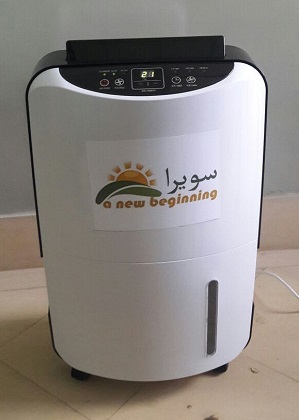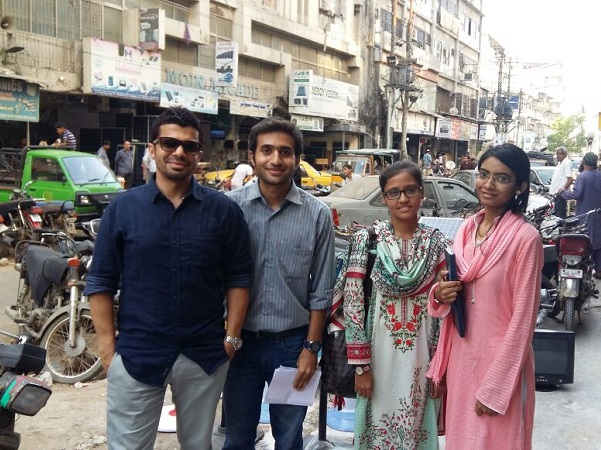Problem Statement:
In many developing countries, lack of water leads to severe hardships and death every year due to uneasy access to groundwater, ponds or lakes especially in deserts and arid lands. Areas of high relative humidity such as Karachi have 40 grams of air per cubic meter (at 38 C and 85% relative humidity). Condensing this moisture using a solar power dehumidifier can provide water for household use. The aim of this project is to develop a water generator that can condense 5-8 liters of water per day from the atmosphere using energy from solar panels.
Specifications:
The system being tested at this time was installed at NED University in Karachi in July 2017. It consists of:
- Five 150W solar panels
- One 12V 1KVA Axpert pure sine wave power inverter/charge controller
- Two 12V 100Ah Narada rechargeable Gel batteries
- One Belin 30 liter Dehumidifier
- Two Solar panel mounts – Adjustable
- Circuit breakers
Our target cost for the system is about $1,000 to $1250.
Water production target is 6-8 liters/day in summer and 4-6 liter/day in the winter
Design and Integration:
The heart of the water generator is the dehumidifier which works on the same refrigeration cycle used in refrigerators, air conditioners and deep freezers. Electricity is used to blow air past evaporator coils through with cold refrigerant is flowing. Heat transfer causes the ambient air to cool, and the refrigerant to vaporize. The air is cooled well below its dew point which cause the moisture it carries to condenser into water. The warm air flows out, while the refrigerant flows into a condenser where it is compressed and cooled, and is circulated back to the evaporator. The entire cycle is shown below:

The dehumidifier used in our tests is rated at 330W and capable of condensing 30 liters of water per day if operated for 24 hours at 30C and relative humidity of 80%. Since it is expected to run without need of line electricity, using solar power, the run time will be lower, depending on the sizing of the solar panels. The solar panels feed electricity to the charge controller which regulates flow of energy into the rechargeable batteries. The power inverter converts the energy stored in the batteries from direct current (DC) to alternating current (AC), and used for running the dehumidifier. The dehumidifier used in our tests is shown below:

The solar panels used for powering the dehumidifier were mounted on the roof:

Rechargeable batteries are used to ensure steady power supply, and also enables night-time operation:

To convert DC power from batteries and solar panel to AC power, a purse sine wave inverter is used. Additional circuit breakers are employed to ensure safe operation:

System Operation:
When the water generator is operated it condenses water!

Some of the interns doing the work on this project:


A series of tests are currently underway to characterize the performance of the system, and finalize its specifications. For more information, please contact watergenerator@sawayra.org
Reference Data
Figure 1. Year round relative humidity and dew point in Karachi, Pakistan
Figure 2. Year-round Karachi temperature range






